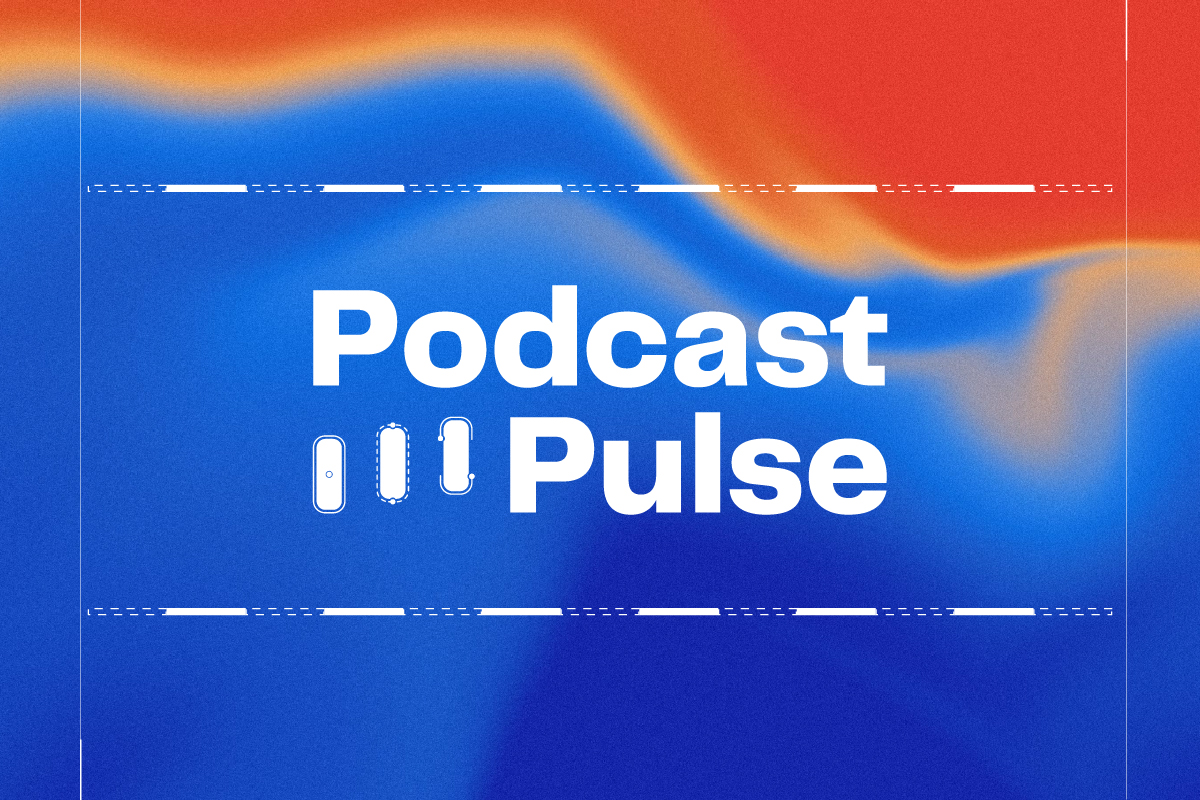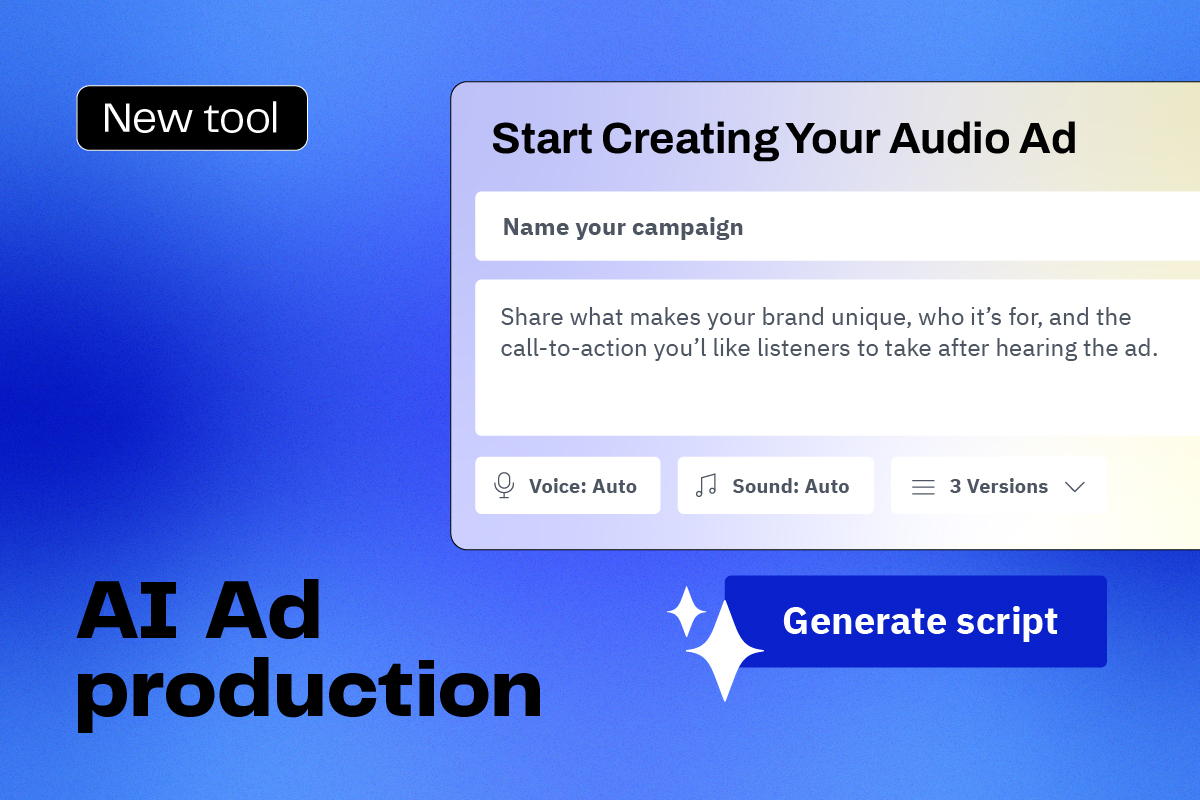How podcasts stack up against radio — and what listeners’ implicit associations mean for advertisers

There’s a wealth of data when it comes to who podcast and radio listeners say they are — brands, agencies and analysts are forever researching their thoughts, beliefs and attitudes. And this is all very useful insight, giving us explicit responses around their claimed behaviors — for example the percentage who agree or disagree with a statement, or how likely they claim they are to do something.
But what about how they actually act and think? What are their real behaviors; their true, unconscious associations and feelings? How do they instinctively feel about podcasts and radio? Our Acast Intelligence team thought it was time we found out more about listeners’ implicit views — and what this means for advertisers.
We partnered with consumer research panel Quantilope, to conduct Implicit Association Testing among weekly podcast and radio listeners. Our sample consisted of 163 weekly podcast listeners, 379 weekly radio listeners, and 142 people who listen weekly to both.
Implicit Association Testing is a research technique that uses response times to measure the unconscious strength of associations, meaning we can define which media channels — in this case podcasts or radio — people most strongly associate with certain characteristics, feelings, and so on.

In the example above, the percentage figure shows how strongly podcasts and radio are associated with the term ‘engaging’. The faster the response time, the more strongly associated the attribute is, and the higher the percentage score. In this case, 72% for podcasts is a combination of response time and agreement level, and we can conclude that listeners implicitly and more quickly agree that podcasts are an engaging medium, versus radio.
Characteristics
Firstly, we wanted to understand which characteristics listeners associate the medium with most strongly, and most implicitly. Listeners had stronger implicit agreement that podcasts were trendy, interesting and sophisticated, whereas radio evoked faster and stronger agreement that this channel was old fashioned, boring and background noise.
Podcasts are a growing media, and these implicit perceptions are one of the things that make it so attractive to brands that want to reach engaged listeners.

Occasions and places
We know how people implicitly feel about podcasts and radio, but when are these mediums being listened to, and what do people unconsciously associate with each?
Regardless of which medium they listened to — podcasts, radio, or both — podcasts were most strongly and implicitly associated with escapism, relaxing and unwinding, and vacations. They’re also most strongly associated with a mood or feeling, whereas radio is associated with a time of day.
Similarly, when we asked about top associations related to places, the majority of respondents most implicitly and strongly associated podcasts with activities and places that typically keep people more engaged in the content — such as walking, the gym, shopping, and so on — while radio was more strongly associated with places where it’s most often used as background noise — at home, at work, or in the car, for example.
There’s more engagement for podcasts with listenership centring around mood and need state, versus simply time of day, and this is something for advertisers to bear in mind. Podcasts' association with activities like shopping is also an opportunity for brands, as listeners may be in relevant situations where they’re more open to related ads.
Connections
Across all listener groups, podcasts were most strongly and implicitly associated with being linked to the terms “young”, “friends” and “celebrities”. For radio, the strongest associations centered around family and the term “old”.
For advertisers looking to reach a younger audience — and one that trusts its favorite hosts to the extent they often consider them a friend — podcasts are a strong medium to consider.
Feelings
Lastly, we asked listeners which feelings they associated with each medium. For podcasts, feelings of freedom, joy and curiosity had the strongest levels of implicit agreement — indicating that people have more of an emotional relationship (rather than a rational one) with the medium.
Such feelings are also important for advertisers to consider when designing podcast creative. There’s an opportunity to tap into that relaxed, joyous audience, adding to their experience rather than detracting from it.

Explicit associations
Looking at listeners' implicit responses has given us a deeper understanding of unconscious associations, but we did also look at explicit agreement around podcasts and radio — and uncovered some interesting insights on where podcasts stand out, as well as listeners’ reasons for stronger preference.
Both radio and podcasts had strong levels of agreement around being engaging, however, agreement that podcasts are authentic, diverse, and trusted was much higher than for radio. Podcasts were also more likely to drive future action and purchase intent.
We also asked listeners why they prefer podcasts, and the standout reasons were the wide range of content, coverage of niche subjects matters, and control over listening to what they want, when they want, to suit their mood.
Brands that want to reach an interested, attentive audience, and one that has actively chosen to listen to content at a particular moment, should look no further than podcasts.
If you’d like to discuss these findings in more detail or see the full presentation of the research, please get in touch with me at bianca.bush@acast.com
There’s a wealth of data when it comes to who podcast and radio listeners say they are — brands, agencies and analysts are forever researching their thoughts, beliefs and attitudes. And this is all very useful insight, giving us explicit responses around their claimed behaviors — for example the percentage who agree or disagree with a statement, or how likely they claim they are to do something.
But what about how they actually act and think? What are their real behaviors; their true, unconscious associations and feelings? How do they instinctively feel about podcasts and radio? Our Acast Intelligence team thought it was time we found out more about listeners’ implicit views — and what this means for advertisers.
We partnered with consumer research panel Quantilope, to conduct Implicit Association Testing among weekly podcast and radio listeners. Our sample consisted of 163 weekly podcast listeners, 379 weekly radio listeners, and 142 people who listen weekly to both.
Implicit Association Testing is a research technique that uses response times to measure the unconscious strength of associations, meaning we can define which media channels — in this case podcasts or radio — people most strongly associate with certain characteristics, feelings, and so on.

In the example above, the percentage figure shows how strongly podcasts and radio are associated with the term ‘engaging’. The faster the response time, the more strongly associated the attribute is, and the higher the percentage score. In this case, 72% for podcasts is a combination of response time and agreement level, and we can conclude that listeners implicitly and more quickly agree that podcasts are an engaging medium, versus radio.
Characteristics
Firstly, we wanted to understand which characteristics listeners associate the medium with most strongly, and most implicitly. Listeners had stronger implicit agreement that podcasts were trendy, interesting and sophisticated, whereas radio evoked faster and stronger agreement that this channel was old fashioned, boring and background noise.
Podcasts are a growing media, and these implicit perceptions are one of the things that make it so attractive to brands that want to reach engaged listeners.

Occasions and places
We know how people implicitly feel about podcasts and radio, but when are these mediums being listened to, and what do people unconsciously associate with each?
Regardless of which medium they listened to — podcasts, radio, or both — podcasts were most strongly and implicitly associated with escapism, relaxing and unwinding, and vacations. They’re also most strongly associated with a mood or feeling, whereas radio is associated with a time of day.
Similarly, when we asked about top associations related to places, the majority of respondents most implicitly and strongly associated podcasts with activities and places that typically keep people more engaged in the content — such as walking, the gym, shopping, and so on — while radio was more strongly associated with places where it’s most often used as background noise — at home, at work, or in the car, for example.
There’s more engagement for podcasts with listenership centring around mood and need state, versus simply time of day, and this is something for advertisers to bear in mind. Podcasts' association with activities like shopping is also an opportunity for brands, as listeners may be in relevant situations where they’re more open to related ads.
Connections
Across all listener groups, podcasts were most strongly and implicitly associated with being linked to the terms “young”, “friends” and “celebrities”. For radio, the strongest associations centered around family and the term “old”.
For advertisers looking to reach a younger audience — and one that trusts its favorite hosts to the extent they often consider them a friend — podcasts are a strong medium to consider.
Feelings
Lastly, we asked listeners which feelings they associated with each medium. For podcasts, feelings of freedom, joy and curiosity had the strongest levels of implicit agreement — indicating that people have more of an emotional relationship (rather than a rational one) with the medium.
Such feelings are also important for advertisers to consider when designing podcast creative. There’s an opportunity to tap into that relaxed, joyous audience, adding to their experience rather than detracting from it.

Explicit associations
Looking at listeners' implicit responses has given us a deeper understanding of unconscious associations, but we did also look at explicit agreement around podcasts and radio — and uncovered some interesting insights on where podcasts stand out, as well as listeners’ reasons for stronger preference.
Both radio and podcasts had strong levels of agreement around being engaging, however, agreement that podcasts are authentic, diverse, and trusted was much higher than for radio. Podcasts were also more likely to drive future action and purchase intent.
We also asked listeners why they prefer podcasts, and the standout reasons were the wide range of content, coverage of niche subjects matters, and control over listening to what they want, when they want, to suit their mood.
Brands that want to reach an interested, attentive audience, and one that has actively chosen to listen to content at a particular moment, should look no further than podcasts.
If you’d like to discuss these findings in more detail or see the full presentation of the research, please get in touch with me at bianca.bush@acast.com





